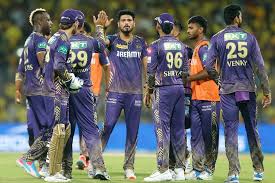Footy Fix: The Crows played 2024’s dumbest game against the AFL’s smartest team – and it was ghastly
In my Six Points column last week, I loudly and whatever is the opposite of proudly proclaimed that the Western Bulldogs were the AFL’s dumbest team. The Dogs have got the chance to reassert their claim on Sunday against Gold Coast, but as it stands, Adelaide could hardly have done more to wrench that title […]

In my Six Points column last week, I loudly and whatever is the opposite of proudly proclaimed that the Western Bulldogs were the AFL’s dumbest team.
The Dogs have got the chance to reassert their claim on Sunday against Gold Coast, but as it stands, Adelaide could hardly have done more to wrench that title off them with their performance against Geelong.
In front of their home crowd, at a venue they’ve been consistently excellent at even before they properly broke out as a finals contender last year, against an opponent whose already threadbare midfield was depleted even further by a pair of significant late outs in Tom Atkins and Mitch Duncan, this was surely the most embarrassing loss of 2024 to date.
No team should have lost with the hand the Crows were dealt, not least when their own is stacked with stars galore; but only one team rocked up to the Adelaide Oval with a serious plan to orchestrate a win, and it sure as hell wasn’t the one Matthew Nicks was coaching.
To be fair to Nicks, while there are clear issues with the Crows’ structure behind the ball and a growing disconnect between what should be elite midfield and forward lines, his team played such brainless, baffling footy throughout, particularly in periods of the game they dominated, that I’m not sure all or even most of the blame for their performance can be laid on him.
I very much doubt Nicks was the one instructing Jordan Dawson, the best kick in the competition, to haphazardly blaze away every time he got clear space running forward, mostly with minimal pressure on him, and practically gift Tom Stewart a sizeable chunk of his equal record 10 intercept marks for the night.
I doubt Reilly O’Brien taking the ball out of the ruck from a ball-up right on the boundary line, thumping it on the boot and spraying it out of bounds on the full was in any of the team meetings – frankly the entire coaching department should be sacked if it was.
It got to the point in the last quarter where I was legitimately thinking the pitch invader who Ben Keays contemplated Andrew Symondsing late in the third term was the 24th-dumbest person to grace the Adelaide Oval that evening.
The stats alone make for gruesome reading – if you’d told me before the match the Crows would rack up 66 inside 50s, 11 of them by their best ball-user Dawson, having been the league’s most efficient team at converting them into goals last year, I’d have had my money on them racking up a cricket score.
Instead, they mustered 11 goals – one in every six. Most egregiously, just two goals came from a whopping 24 entries in the second term, with the Crows utterly dominant in every possible measure of calculating it but only closing the gap by seven points.
Keep in mind this is a team with Taylor Walker, Darcy Fogarty and a decent-looking Chris Burgess as its key forward trio, with Izak Rankine and Josh Rachele nipping at their heels. There’s simply no forward line that compares to that going around, yet the Crows seemed content to give their opponents, often outsized and mostly outclassed, Stewart excepted, the advantage in virtually every contest.
The 150-game veteran was central to everything; Nicks’ half time admission that the Crows had put time into him in the first quarter only for it not to work is among the more gobsmacking things I’ve heard a coach say in quite a while. If there was indeed a plan to stop him marking everything that came his way, or to just stop giving him the chance to do so by kicking the ball away from his general vicinity, I couldn’t see much of it.
Really, if the Crows were serious about stopping Stewart, they should have been paying attention to what Essendon did to James Sicily last week: have a dedicated stopper to limit his influence in the air, drag him away from the play wherever possible, and in between niggle and scrap and make his life hell.
Chris Burgess seems perfectly suited to that task: tall but athletic, he’d be more than capable of going with Stewart, and while he looked dangerous with a couple of goals in the first half, with Walker and Fogarty as the two main lynchpins in attack they could have afforded for him to be the third tall or even the decoy.
And even then, having someone good enough offensively to at least give Stewart pause for thought about leaving him in the way he gleefully does to all opponents he doesn’t respect would have surely at least brought those intercept mark numbers down to, I don’t know, six or seven instead?
The danger was apparent every time the Crows, and Dawson in particular, didn’t just aimlessly blaze away. Look what happens here, on one of the rare occasions the captain actually lowered his eyes and looked to place a kick.
He’s slightly fortunate that Stewart, for just about the only time all night, didn’t read where the kick was going straight off the boot and rush over to intercept, but then perhaps the cleverness of the kick was that it didn’t go to a conventional spot. And wouldn’t you know it, the Cats’ usually watertight defensive structure is scrambled, space opens up for Fogarty to grab a loose ball, and given a one-on-one against young Oisin Mullin rather than a defender to beat in an aerial contest, shows his strength and class.
It’s easy to point out teams being dumb with ball in hand – fun, too.
but just as damning as the Crows’ constant butchering of the ball moving forward is how comprehensively Nicks was outcoached at the stoppages – which really should have been the area his team exerted most dominance in.
Chris Scott, for all the criticism that has come his way over the years, is only rarely beaten in the coaches’ box. For 12 years, he has thrived in making the Cats, by and large, a sensible, pragmatic team that understands its weaknesses and moves pieces to mitigate them, while emphasising its strengths. It’s something Nicks would do well to learn from.
The Cats scoring four of their five third-quarter goals, the burst that took the game into their keeping, from stoppages is as much of a triumph for Scott as it is an indictment on his rival number. With the personnel around the ball for both teams, it should have been all Geelong could do to stop the Crows doing to them what they’d eventually do to the Crows.
You could tell from literally the second centre bounce of the game that the Crows were in danger of being outthought in this regard.
With a centre bounce combination of Rhys Stanley, Mark Blicavs, Jhye Clark and Patrick Dangerfield, realistically there’s one man who could provide the Cats a quick getaway from the stoppage and a deep entry forward.
So the stoppage set-up was simple: Dangerfield sets up on defensive side with the instruction to run straight through the contest and attack the ball freely, Blicavs and Stanley move to open up space by blocking their Crows opponents, Matt Crouch for the former and O’Brien for the later, while Clark moves around to be the defensive blocker in case things don’t work out well and Dangerfield’s direct opponent, Dawson, is the one who grabs it.
It works even better than even Scott could have dreamed. Stanley is able to engage with O’Brien in the ruck contest to open a perfect straight line path for Dangerfield; Dawson realises he’s in serious strife having let his man start goal side of him and tries to impede his run, resulting in a holding the man free; Blicavs makes only the most token, late attempt to go to the footy, and otherwise simply holds his space outside and blocks Crouch a go at the footy; Dangerfield explodes away and drives the ball deep, and with the 6-6-6 rule preventing any Crows numbers getting back, the Cats were always a great chance of scoring.
A smarter team than Adelaide would have recognised Dangerfield’s status as the sole damaging attacking midfielder at that contest, and not started him against their own biggest weapon in that regard in Dawson. They certainly wouldn’t have positioned Rory Laird where he was, practically at O’Brien’s heels so that even if he did shark the hitout, he’d have precious little space to work with.
Dangerfield’s pace at stoppages remained a point of difference for the Cats all evening – Crouch, Laird and Dawson aren’t particularly speedy – and Scott knew just how to exploit it.
Case in point: this centre bounce in the third term. The Cats know, mano e mano, Dangerfield has the pace to burn off any Crow who could stand him (in this case, it’s crouch); so all his fellow on-ballers need to do is keep the ball rolling forward. The attackers, meanwhile, know to hold their space forward of the ball and not rush up to join the stoppage from the front as many teams do, leaving free space for Danger to run into.
Sure enough, Dangerfield eventually gathers, and with so many Crows magnetically drawn to him and the footy, it’s simple enough, albeit brilliantly executed, to find Ollie Dempsey in space, create an overlap, and end the play with a superb Tom Hawkins snap.
Unless the Crows significantly improve their defensive work at stoppages – and other teams will have far more attacking weapons in there than the Cats did – their Achilles heel in defence is going to be severely, and often fatally, tested.
This is a backline which is asking Mark Keane to defend space as well as an opponent; no disrespect to him, but I’ve watched the below clip of Shaun Mannagh’s first goal about 10 times now and I can’t for the life of me work out what Keane’s plan was as he jogged past the first marking contest close to goal, didn’t engage at all to support Wayne Milera, and was left ball-watching as two Cats goal side of their opponents in Mannagh and Brad Close essentially raffled the goal from 15 out.
There is oodles of talent on the Crows’ list; more than enough to be a finals, if not a premiership contender. Their forward line is a world-beater, and the midfield powerful – and on better nights, skilful – enough to give them first use, and protect their defenders as much as possible.
But right now, Adelaide are held hostage by the chinks in their armour, both unable to cover them and not maximising their areas of strength anywhere near enough to get the job done.
Sports opinion delivered daily
A lot of the blame for that, and responsibility for fixing it, rests on Nicks’ shoulders, but not all.
For all Scott’s coaching acumen, he has a list of sensible, intelligent footballers who respond to problems and find solutions without the need for intervention from the box. I wouldn’t be surprised if the Dangerfield centre bounce breakout I gushed about earlier was something created in the heat of the moment rather than a training set play, given how much it differed from nearly all the Cats’ other centre bounce set-ups on the night.
The Crows have it in them to be just as wise, both with the ball and without: or at the very least, not be the dumbest team to ever draw breath.
They were the latter on Friday night: many more performances like that, and contract extension or not, it’ll be Nicks who ends up paying for it.
What's Your Reaction?














































 BLOG
BLOG 







